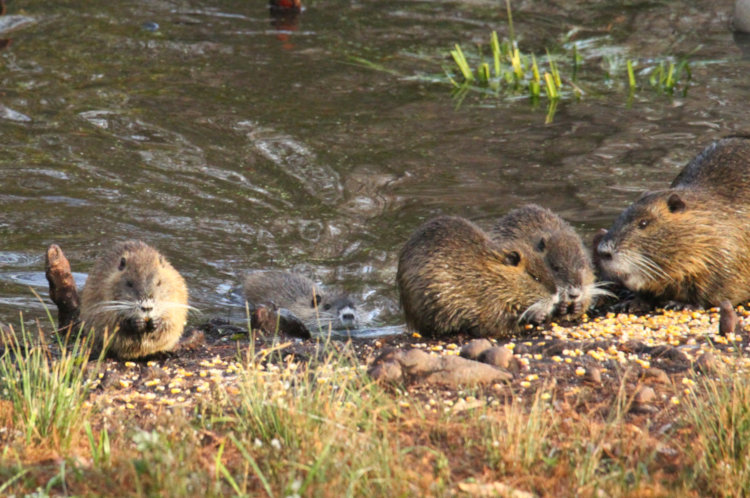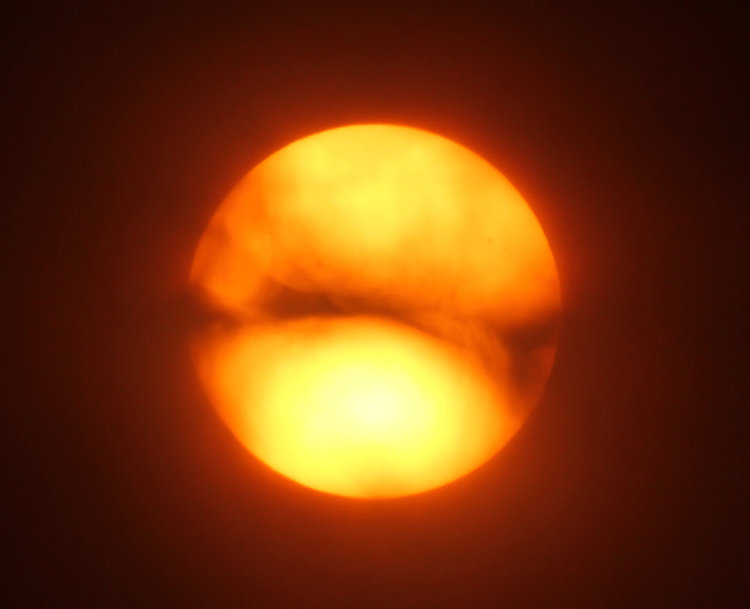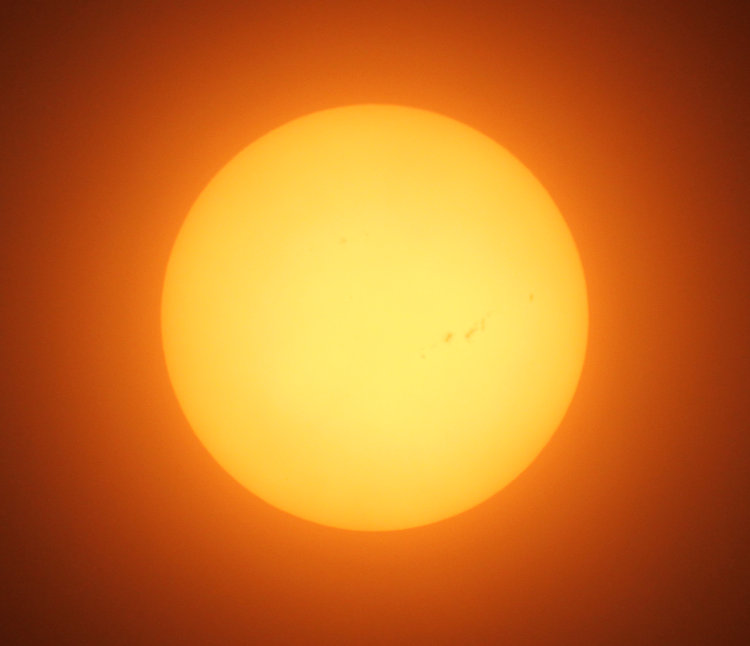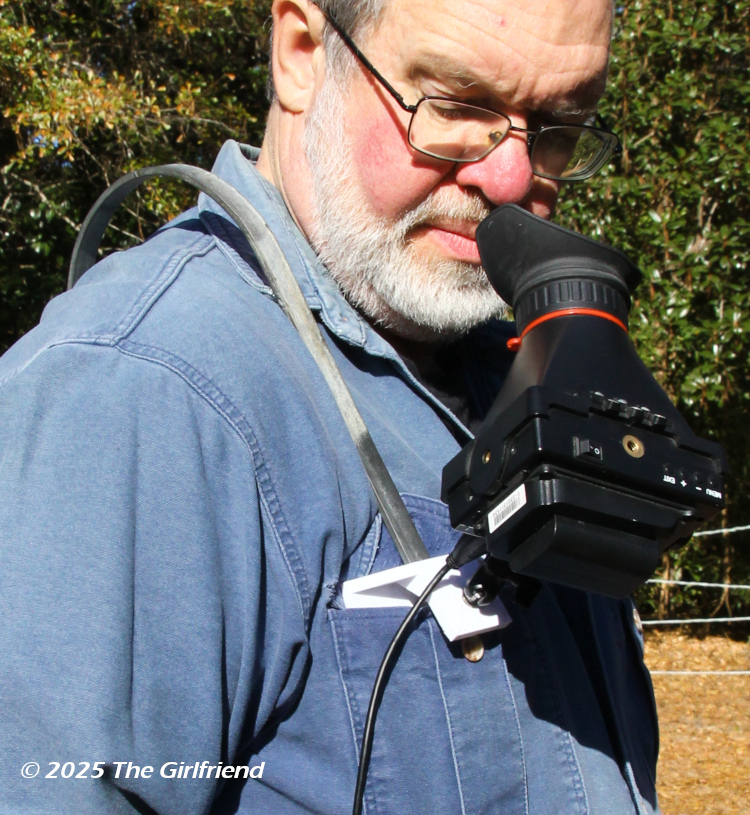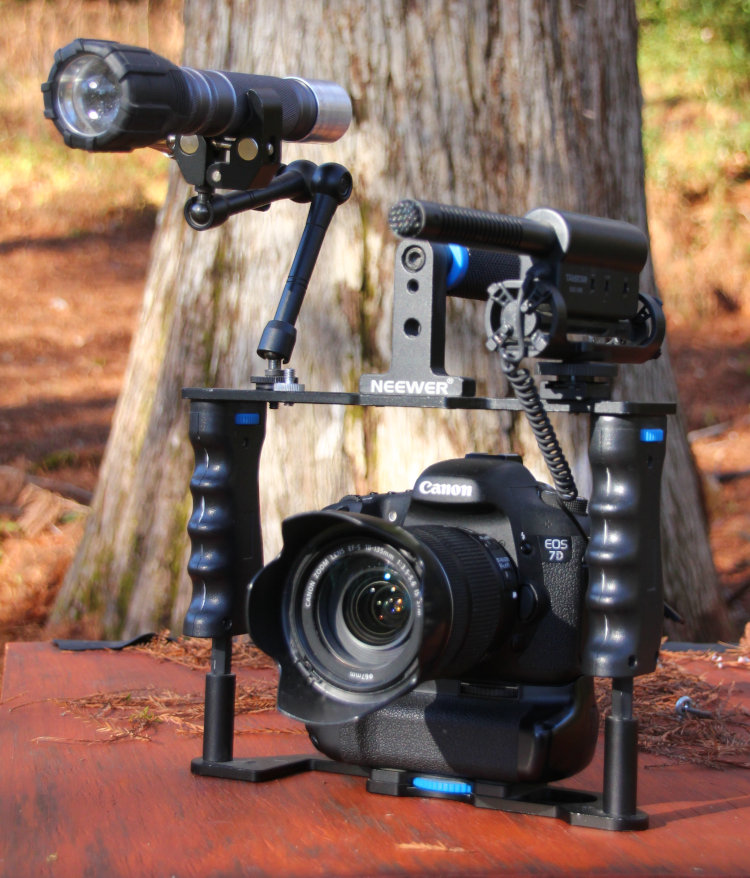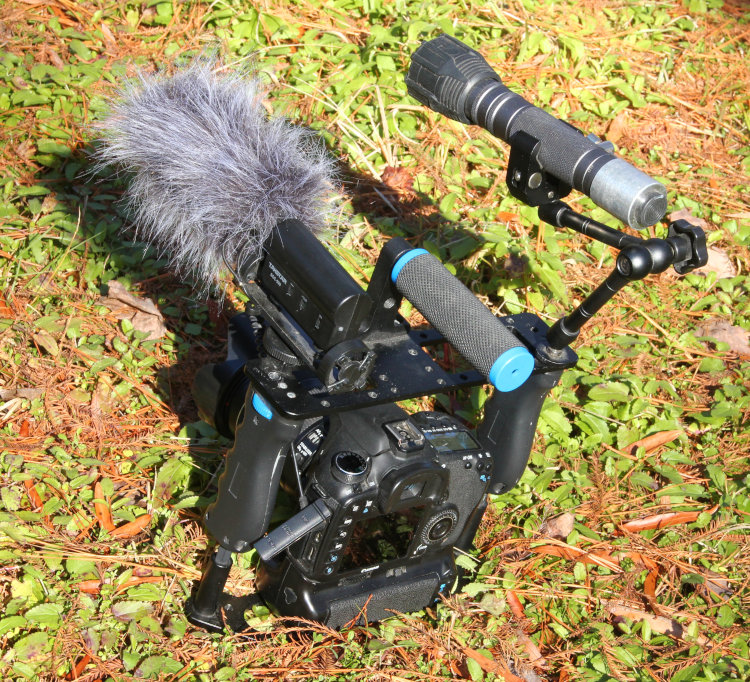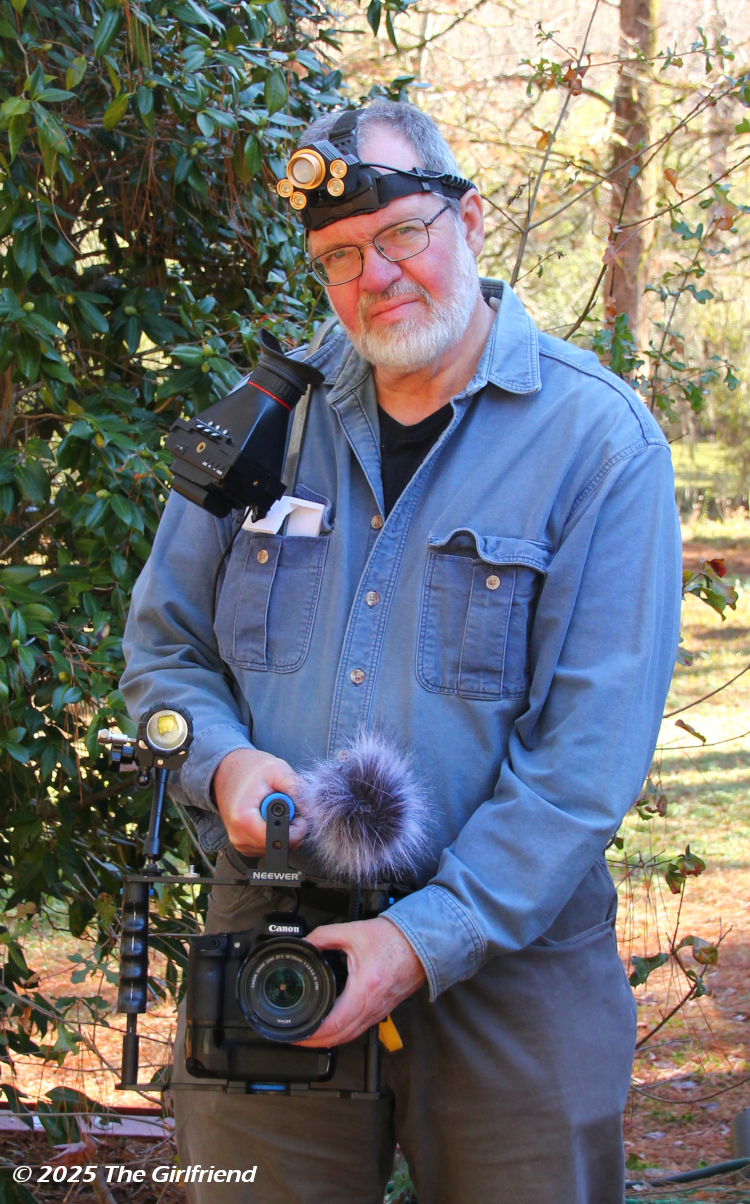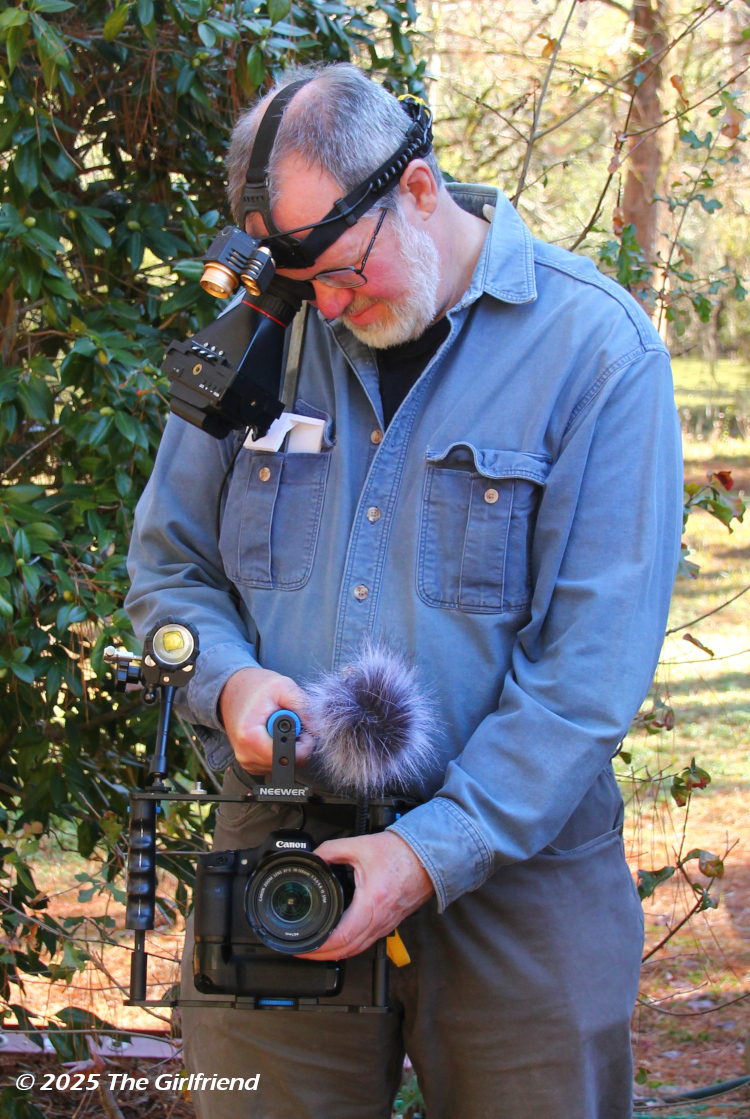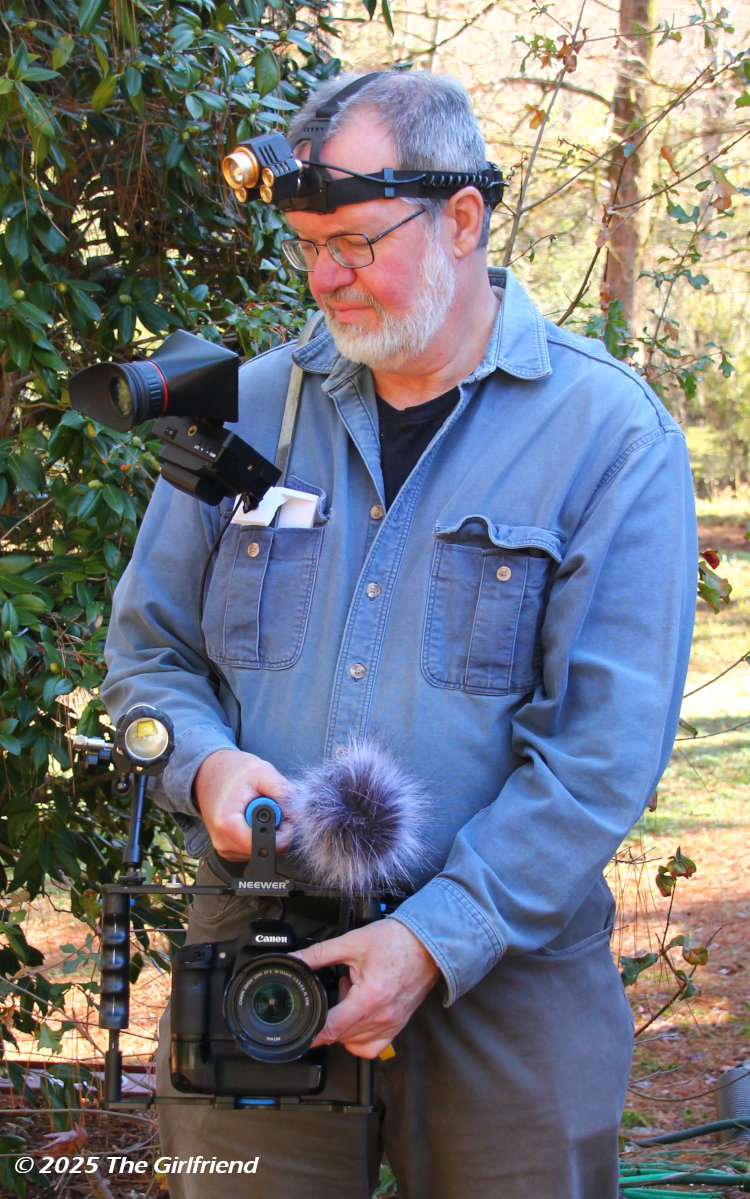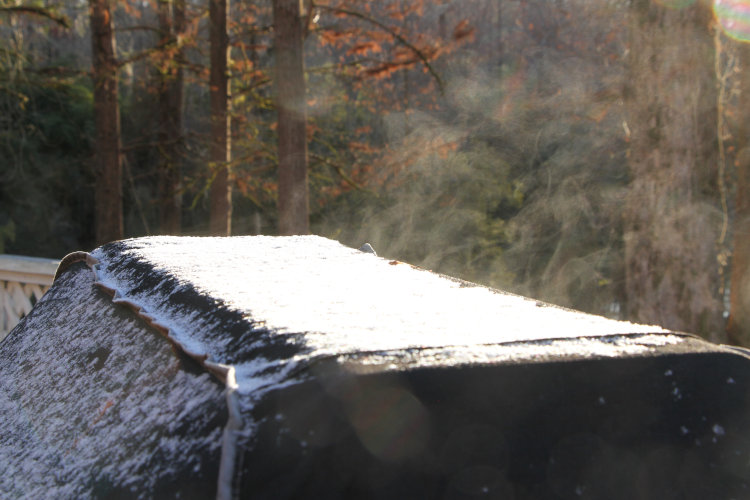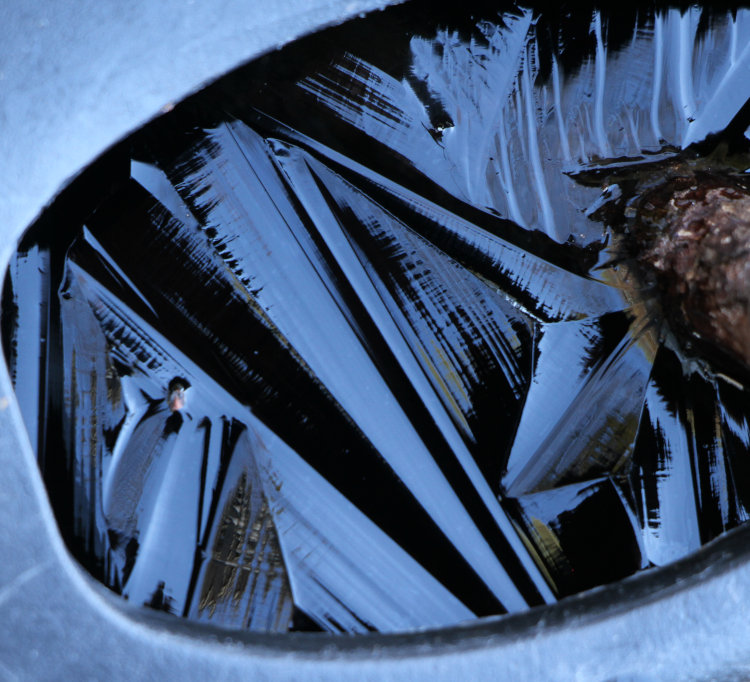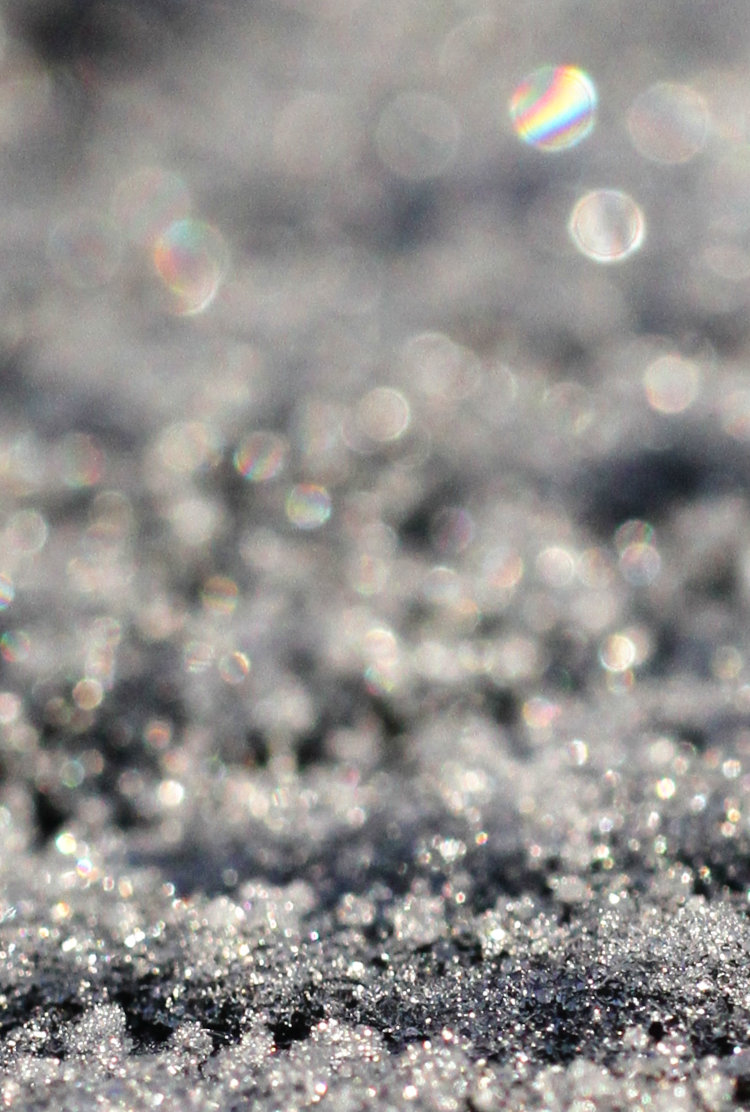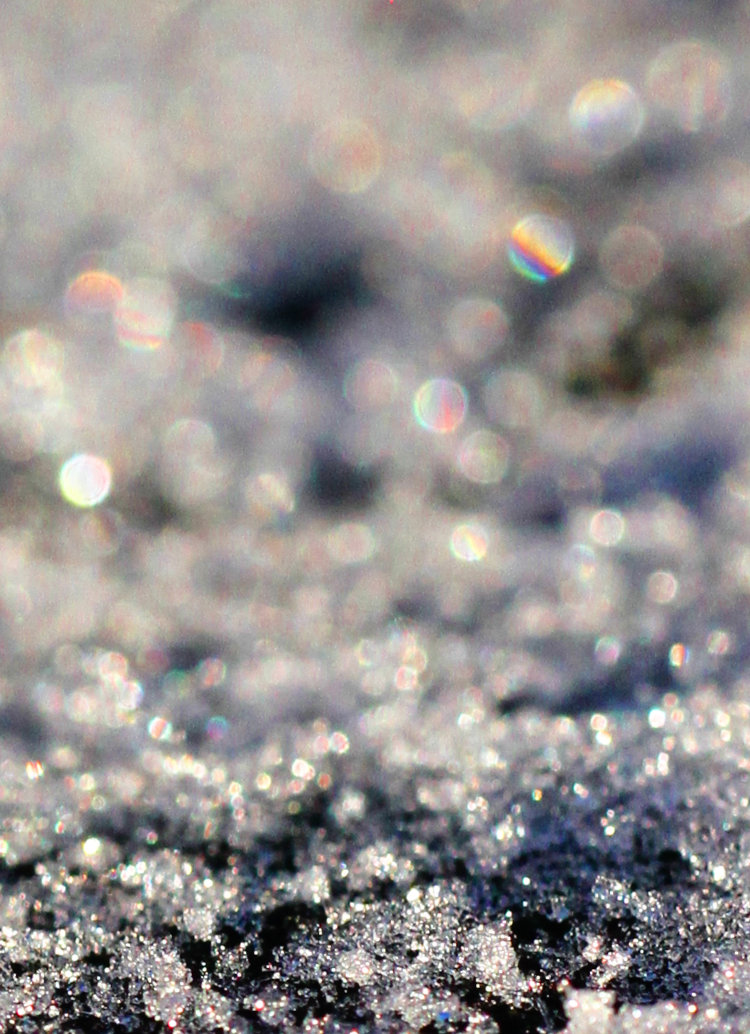As intimated earlier, I did get out to do a few shots while the temperatures remained in the ‘frigid’ class, eventually peaking above freezing, but not by a lot. And while we’ve already well surpassed the record for images uploaded during a year, we’ll take any opportunity to blast it out of the water, because why not? The ducks were not only conspicuously absent for nearly the entire daylight hours, they apparently hadn’t made a run on the corn (which did happen right before sunset, however.) But one of the red-shouldered hawks (Buteo lineatus) has been hanging around hopefully, taking a chance whenever possible to stake out the yard until we actually see them there and chase them off – to the best of our knowledge, they have neither succeeded nor attempted to snag a duck meal, but we know they’re thinking about it.
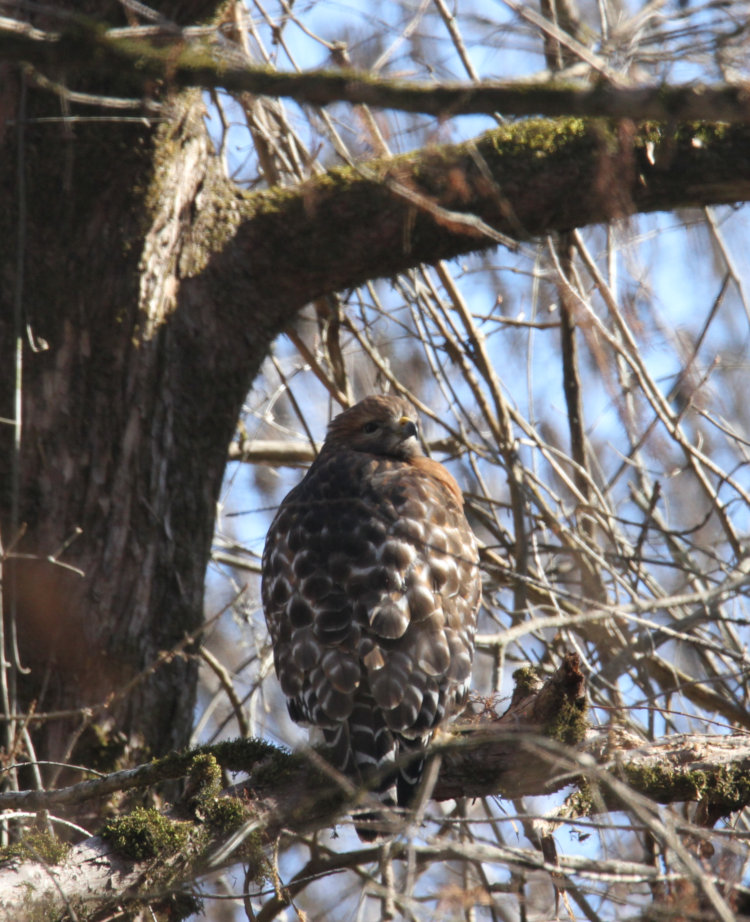
This gives a small indication of why they can be hard to see, and even harder to photograph as well – they prefer to sit well into the canopy, even when there are no leaves or needles, to obscure themselves close to the trunks, but we’re fairly familiar with what the trees look like in the backyard now, and usually spot the ‘clump’ where there hadn’t been one before.
This one allowed me to get almost directly underneath:

Soon after this frame, the hawk vented forth a few quiet squeaks in protest before flying off to another location on the opposite side of the pond, but at least I got around far enough for a catchlight.
The pond surface wasn’t completely frozen over, but close, and there were no indications that overnight visitors had been churning up the water to prevent this, either, so they apparently wrapped it up before the night wore on too far; we’d seen a pair of juvie nutrias cruising around when we distributed the corn at about 8 PM last night and opted to leave them to it. But the evidence that they’ve been visiting routinely is around, in a lot of places, if you know what to look for.

That’s a small ‘knee’ of one of the bald cypress trees, not far out into the pond, showing that something has been gnawing on it. Now, I believe we’ve seen this behavior from both the nutrias and the beavers, so this is inconclusive, though I think we’d lean towards nutria because they seem to only want plants and softer stuff, so this seems to be as far as they go with hardwoods. And while this wasn’t very far out into the water from the edge, another wasn’t at all.
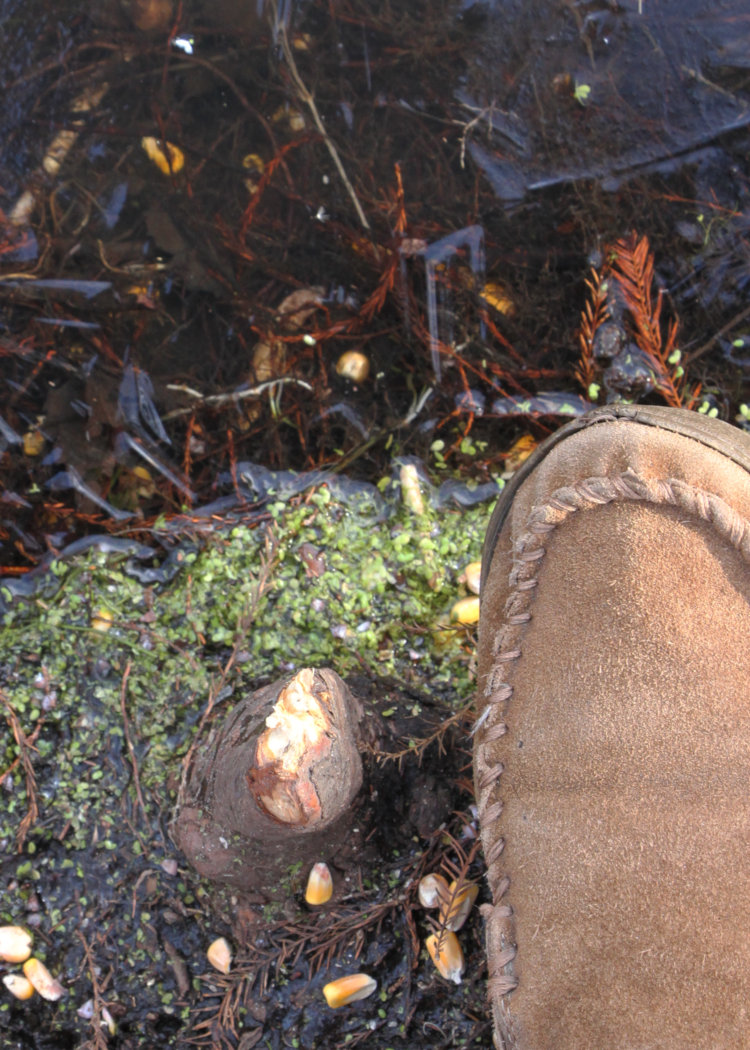
Yeah, that’s my foot alongside, showing that whoever accomplished this was right up on shore – which still doesn’t prove it was a nutria, though slightly more likely. Over on Turtle Island, however, the evidence was almost entirely in favor of beavers.
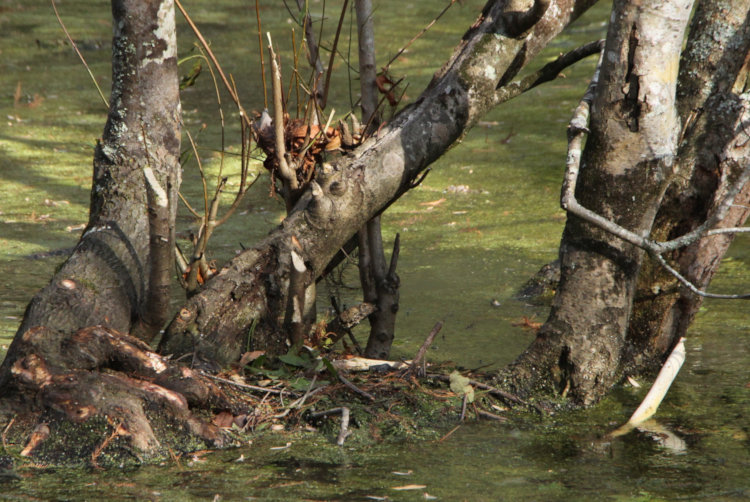
You can see the various small saplings truncated sharply, a habit that nutrias never display. And since we’ve seen a beaver feeding among the nutria bebbies one night, it’s safe to say they’re the culprit here.
Quite close to Turtle Island was something a bit curious, too.
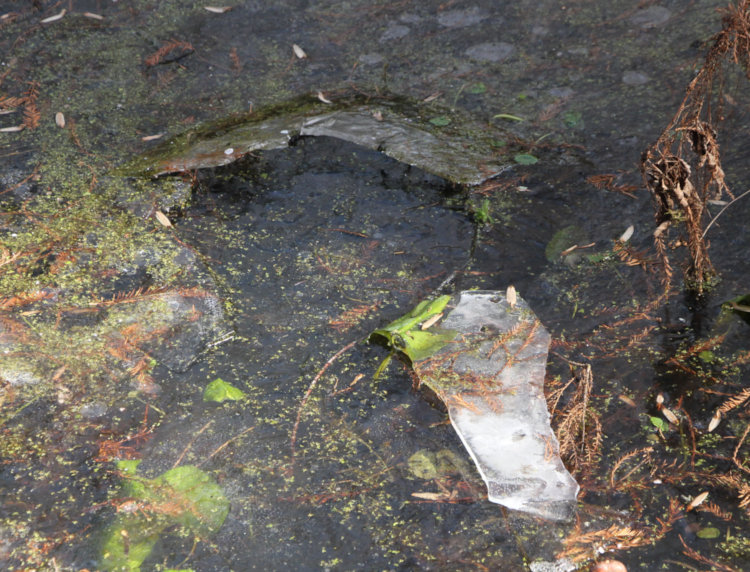
Something broke through the ice, and from the underside as well, right alongside shore. And another, a couple of meters away.
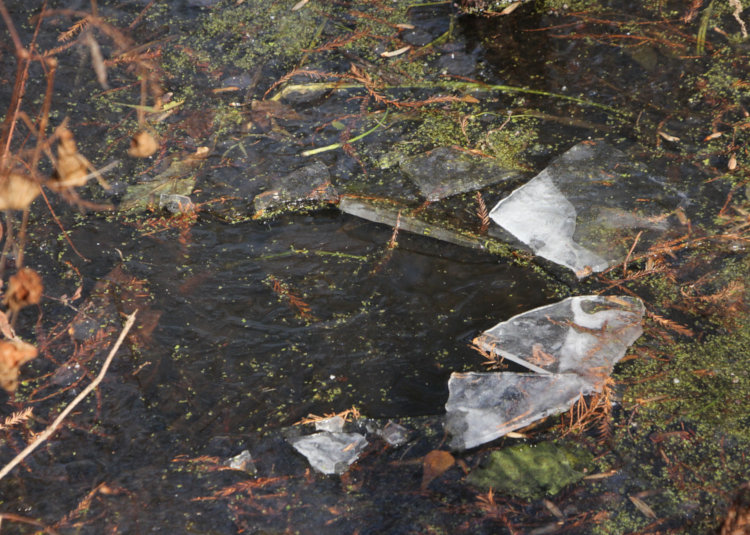
Both of these holes were roughly 30cm in diameter, so big enough for an adult beaver or nutria. I looked hard, and in no location on the frozen surface was any further evidence shown – no other breaks, no rough areas where the water had been stirred up just before freezing, and no apparent entry point. Plus, this wasn’t an area that I’d seen either species visiting, and no evidence of them having come ashore for any plants thereon. Curious.
While out, I checked on the greenhouse, which was getting nicely toasty under the administrations of bright sunlight, and the anoles within were showing no recognition that it was still below freezing outside.
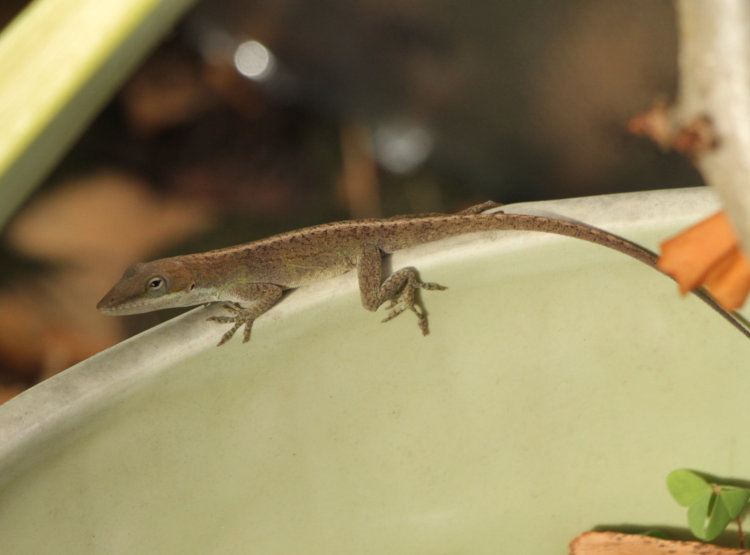
There was no reason for them to be hesitant, after all – my glasses immediately fogged over as soon as I stepped inside.
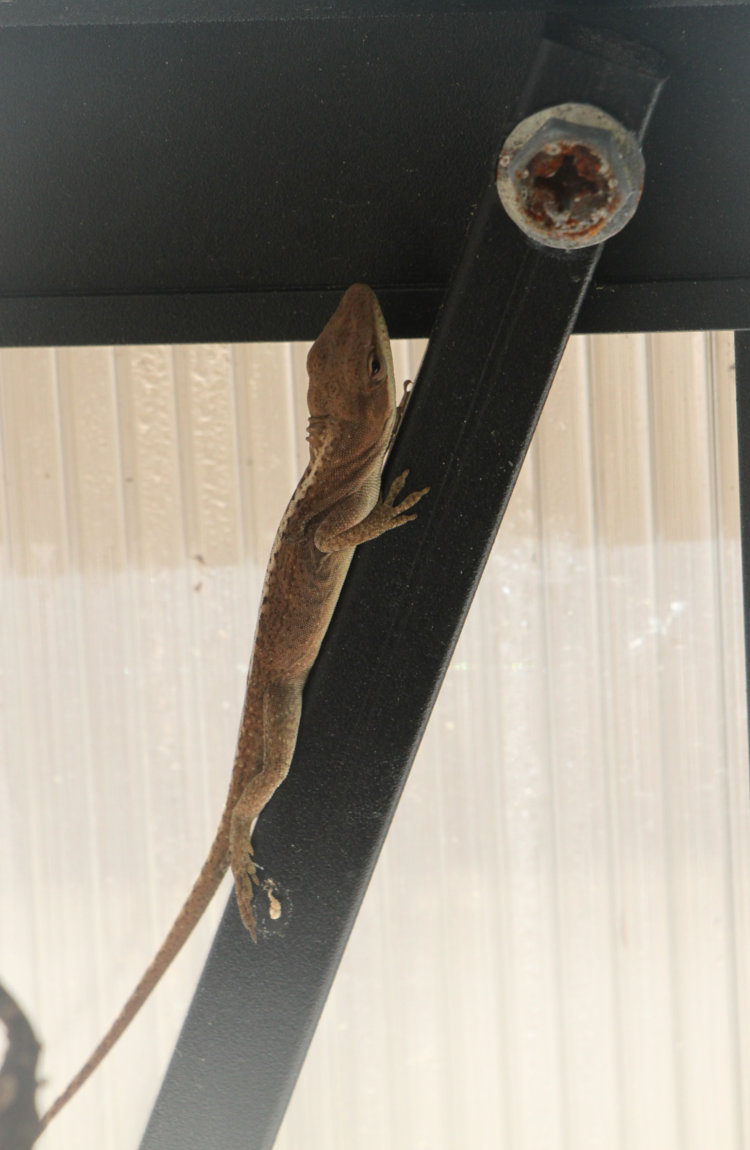
Even without the sunlight, the heater within is set to keep things above 10°c, though last night it was fighting and only managed about 7° – that’s enough to send the anoles into some tight shelter to conserve their body heat, only to pop back out as soon as it was a bit warmer.
Meanwhile, the potted Japanese maple therein showed a couple of early scouts for the spring as well.

Those are the colors of new leaves, right up on the very top, with some red buds visible down below. Funny to see this early, and I expect the bulk of them will still wait a couple of months to pop out, but a good sign at least.
And finally, I’ve been monitoring the almond tree to see when its last leaf will fall; it’s not there yet.

It stayed impressively green until after the second frost, when it finally started showing signs that it recognized the colder weather, but even with these temperatures and some strong wind gusts, it’s still hanging onto some leaves in a fashionable manner – I’m impressed.
And that was it for me – I’d exhausted both the most obvious photo subjects and my tolerance for the cold, which hasn’t been very high the past couple of days. But hey, what is that, eleven photos? I’m still keeping things moving here. And while I doubt this is the coldest that it’ll get this winter, especially with such an early start for this latitude, it would be nice if it was, wouldn’t it?

